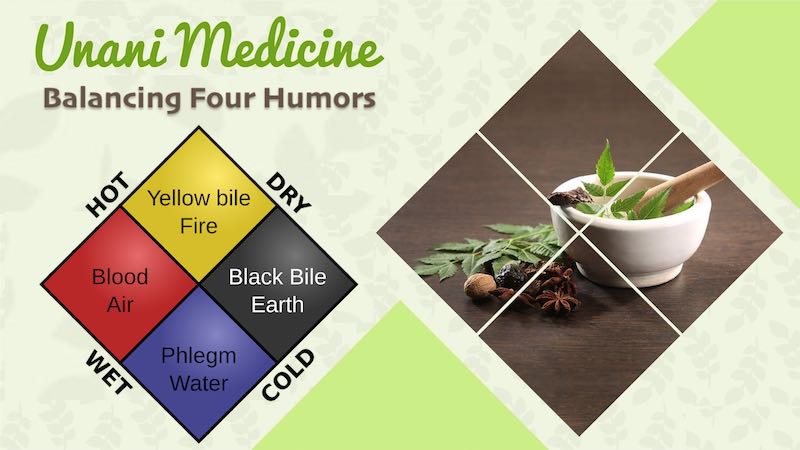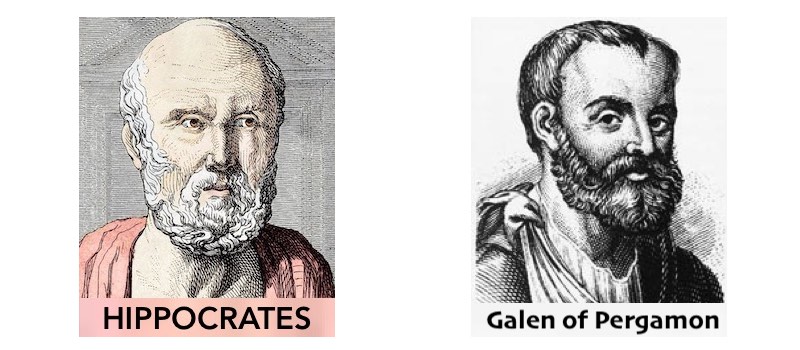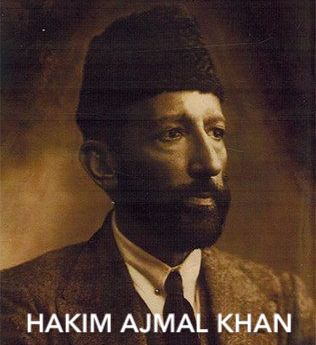Unani

UNANI-TIBB or Unani Medicine also spelled YUNANI MEDICINE… and known in different parts of the world by different names like… Greeco Arabic Medicine, Islamic Medicine, Oriental Medicine, Tibb-E-Sunnati, Eastern Medicine, Uighur Medicine, Traditional Iranian Medicine.
The origins of the Unani remedy are found within the doctrines of the historical Greek physicians, Hippocrates and Galen. As a field, it changed into later advanced and subtle thru systematic experiment by the Arabs, most prominently by using Muslim scholar-physician Avicenna. The bulk of Greek knowledge was translated into Arabic, a part of that knowledge being the principles of medicine.

PRINCIPLES OF UNANI MEDICINE
The history of the Unani medicinal drug can be characterized via the work of its practitioners, or Hakims, who trust natural healing based totally on the fundamental truth of harmony and equilibrium, uniting the physical, mental, and spiritual realms.
AL-UMOOR AL-TABIYAH: BASIC PHYSIOLOGICAL PRINCIPLES
According to practitioners of Unani medicine, the health of the human body is maintained by the harmonious process of AL-UMOOR AL-TABIYAH, the seven basic physiological fundamental truths of Unani teaching.
These principles include: –
- ARKAN, or Elements
- MIZAJ, or Temperament or Personality
- AKHLAT, or Bodily Humours
- AAZA, or Organs and Systems
- ARWAH, or Vital Spirit
- QUWA, or Physical or Mental Power
- AFAAL, or functions.
Interacting with each other, these seven natural constituents preserve the balance in the natural constitution of the human body.
Each individual’s constitution has a self-regulating ability or power, called Tabiyat or MUDABBIRA-E-BADAN; vis medicatrix naturae in Latin, or to keep the seven elements in equilibrium.
ARKAN AND MIZAJ: ELEMENTS AND TEMPERAMENT
As four simple, indivisible entities—
- ARZ (EARTH)
- MAA (WATER)
- NAR (FIRE)
- HAWA (AIR) — ARKAN not only constitutes the chief elements of the human body but also makes up all other creations in the universe.
There are predictable consequences to the movements and interactions (imtizaj) of the four arkan. As those elements act upon and react with each other, they constantly undergo change into diverse states of “Genesis and Lysis” (era and deterioration), because of ulfat-e-keemiyah (reputation of medicine by the body) and nafarat-e-keemiyah (rejection of a medicinal drug). Professional hakims claim that they are able to understand, recognize, and look at such states.
The 4 essential mizaj (temperaments) are hot, cold, wet, and dry. Four more are compounded of these single temperaments—specifically, hot and dry, hot and moist, cold and dry, and cold and moist. Possessed in unique proportion, mizaj is balanced by using all entities within the cosmos, which includes all plant life, minerals, and animals.
The equilibrium of the character’s elemental aggregate and resulting mizaj, as determined through tabiyat, provides a strong charter to that person—in other phrases, fitness. Simply as elemental stability maintains a person in a healthy state, modifications in natural temperament purpose the fitness of an individual to suffer. Therefore, mizaj plays a pivotal position in Unani in characterizing someone’s normal state (physical, intellectual, and social), as well as the nature of a disorder.
DOCTRINE OF AKHLAT
Hippocrates propounded the doctrine of fluids, or humours, of the body, and he classified the humours into four classifications based on their shade. These categories were precise by Galen and later by Avicenna. They seem in Unani practice as DAM (blood), BALGHAM (phlegm), SAFRA (yellow bile), and SAUDA (black bile). The human tendencies similar to those humours are, respectively, SANGUINE, PHLEGMATIC, CHOLERIC, and MELANCHOLIC.
Everybody is taken into consideration to have a specific humoral makeup, determined by way of the predominance of given humour in his or her charter. The quality and quantity of the humours in a man or woman—someone’s precise, right, and proportionate humoral make-up is stated to assure health & fitness. Situations are other than this balance signal disease or ailment.
The concept of humours (nazaria-e-akhlat), which is the essence of the practice of Unani medicine, holds that the four humours are derived from and applied within the digestive process. Their non-stop movement and response outcomes in the breakdown of complex macromolecules into less complicated molecules, which are then included all through the body in the form of fluid. Those humours, the akhlat, suffuse the body’s cells, interstitial spaces, and vascular channels, affecting physical and behavioral well-being, and are most strong in a healthy man or woman.
RELATIONSHIP BETWEEN TABIYAT AND ASBAB-E-SITTAH-ZAROORIAH
In the Unani machine, tabiyat is a character’s internal power or capability to resist or fight disease and to carry out regular physiological capabilities. Believing that it is most effective tabiyat this is engaged in actually curing an ailment,
Unani hakims say that they are most effectively assisting from “outside” by prescribing a therapeutic remedy. If not adversely affected, tabiyat can remove maximum infections without scientific treatment, using what may be thought of as the natural healing system of the mind and body.
Unani medicine acknowledges six physical, or outside factors, called ASBAB-E-SITTAH-ZAROORIAH, which might be crucial in setting up a synchronized biological rhythm and as a consequence residing a balanced life. The six ASBAB-E-SITTAH-ZAROORIAH are:
HAWA (AIR), wherein the best quality of the air someone breathes is a notion to have a right away effect on his or her temperament and, hence, health & fitness.
MAKOOL-WO-MASHROOB (food and drink), in which the nutritional dietary value, quality, and quantity of one’s food and drink are believed to ensure physical health and fitness through effectively strengthening TABIYAT.
HARKAT-WO-SAKOON-E-JISMIAH (physical exercise and repose), which emphasizes the fantastic consequences of balanced bodily workout on an individual’s inner resistance and TABIYAT.
HARKAT-O-SAKOON NAFSANIAH (Mental peace and relaxation), which emphasizes the concurrent engagement of the human mind in several emotional and intellectual activities. Just because the body requires methodical or systematic and planned exercise and relaxation, Unani medicine holds that the human brain and mind require the best stimulation and proper rest as well.
NAUM-O-YAQZAH (sleep and wakefulness), wherein a man or woman’s health and alertness are understood as being depending on a specific amount of sound sleep in the 24-hour (circadian) cycle.
IHTEBAS AND ISTIFRAGH (retention and excretion), which considers the metabolism of meals and liquid as each affecting and being regulated by using Tabiyat. According to the Unani remedy, the assimilation of food and liquid encourages elimination from the body of excessive and noxious substances. Consequently, to preserve a harmonic and synchronized tabiyat, sure useful give end-products of KAUN-O-FASAD (genesis and lysis) are keeps in the body while unhealthy ones are expelled.
These 6 factors are accepted by Unani Hakims that directly have an effect on the harmony of the human mind and body.
Socioeconomic, geographic, and environmental factors are considered secondary factors (Asbab-E-Ghair-Zarooriah) in the Unani system and therefore indirectly influence Tabiyat. However, both the primary and secondary factors must be closely considered in the Unani process of treatment.
MODES OF TREATMENT
The initial method to remedy in the Unani involves the establishment of a routine to a regimen and balance the external factors (e. g., air, water, and food) involved in illnesses and diseases. If this proves inadequate, then another way, together with remedy with herbal medicines, may be encouraged. Any Unani treatment prescribed by Hakim acts as an external agent to assist improve the patient’s tabiyat and thus restore health, fitness, and a sense and touch of well-being.
There are various therapeutic procedures available with Hakim. ILAJ-BI-GHIZA, or diet therapy, includes recommending a specific eating regimen, which is the simplest and most natural course of treatment by Hakim.
For fever, for example, Unani medicine stresses a nutrient-wealthy, low-roughage eating regimen that would consist of DALIA (porridge) and kheer (a milk broth). Each the quantity and quality of food are taken into consideration. Exceptionally rare in the current Unani remedy is ILAJ-BI-MISLA, or organotherapy, a mode of treatment that involves healing a diseased organ by using tissue extracts from the same organ of a healthy animal.
ILAJ-BI-DAWA, or pharmacotherapy, is the use of medications by using Unani physicians. This treatment method is considered by physicians to be natural, eco-friendly, and much less intrusive and extra effective than many different methods. The Unani system’s pharmacopeia is vast, enriched with more than 2,000 medicines derived from various herbal, mineral, and animal sources.
Unani medications are many times processed by classical methods of preparation as originally described in Greco-Arabic medicine. Unani medicines are used singly or are compounded with other substances to achieve synergistic, antagonistic, or detoxifying effects or simply as bases for effective ingestion and assimilation.
 In the 1920s Indian physician, AJMAL KHAN revolutionized Unani medicinal drug with the aid of advocating that studies be carried out on numerous herbal products that have been claimed by ancient physicians to impact stunning treatment and cures.
In the 1920s Indian physician, AJMAL KHAN revolutionized Unani medicinal drug with the aid of advocating that studies be carried out on numerous herbal products that have been claimed by ancient physicians to impact stunning treatment and cures.
In the 1930s Indian-born scientist SALIMUZZAMAN SIDDIQUI, who specialized in phytochemistry (the chemistry of plants), isolated robust constituents from a plant known in India as CHHOTA CHAND (Rauwolfia serpentine).
Subsequent pharmacological studies determined that the plant became the supply of a bioactive substance referred to as reserpine, which found use in western medicine as a tranquilizer and as an antihypertensive agent (lowering abnormally excessive blood pressure). The ones make use of supported a number of the medical applications that were described by way of hakims. Siddiqui named the derived medicines, which included AJMALINE and AJMALICINE, for khan as a tribute to his groundbreaking research efforts.
Having won recognition from the World Health Organization (WHO) in 1976, the Unani became increasingly accepted globally as a system of Traditional, Complementary and Alternative Medicine.
In India, numerous establishments engaged in Unani teaching and research. The Central Council for Research in Unani Medicine (CCRUM), an undertaking of the Indian government, for instance, facilitated the translation of classical heritage, the organization of clinical trials, the improvement of drug standardization, and the investigation of toxicological and phytopharmacological properties of natural products that had long been used by Unani physicians.
Classical Unani medicine recommended established “REGIMENTAL” therapies (TADABEER) in the treatment of various chronic and acute diseases. Those therapies include DALAK (massage), HAMMAM (bath and sauna), KARAT (exercise), FASD (venesection, or opening a vein to let out blood), HIJAMA (cupping, a process of drawing blood to the surface of the body by using a glass cup or tube), and AMAT-E-KAI (leeching, or bleeding a person by using leeches). The essential function of all those regimens is to remove impure blood or impurities from the body.
Surgical interventions, or ILAJ-BIL-YAD, are the last resort. Their practice generally is beyond the realm of the hakim’s expertise.
URDU NAMES FOR DISEASES AS PER UNANI LITERATURE
Sarsam Haqiqi (Meningitis)
Subat (Coma)
Sar‘ (Epilepsy)
Sakta (Apoplexy)
Qilla Al-Laban (Suppressed Lactation)
Tashannuj (Cramp/Convulsion/Spasm)
Suda Ardi (Secondary Headache)
Ra‘Sha (Tremor)
Aqrab Gazidigi (Scorpion Bite)
Jarab (Scabies)
Sa‘Fa (A Variant Infection Involving Head, Face And Hair Follicles)
Ghangharana (Gangrene)
Ta‘Un (Plague)
Quruh Muta’kkila (Degenerative Wounds)
Quruh Muta’affina (Infected Wounds)
Litharghus/Sarsam Balghami (Meningitis Due To Phlegm)
Laqwa (Facial Paralysis)
Ru‘Af (Epistaxis)
Dhiq Al-Nafas (Bronchitis)
Dhat Al-Janb (Pleurisy)
Usr Al-Bal (Dysphagia)
Nazf Al-Dam (Haemorrhage / Bleeding)
Khunaq (Ludwig’s Angina)
Malankhuliya Maraqi (Psychoneurosis)
Istirkha Al-Lisan (Glossoptosis)
Tamaddud (Stretching Of The Muscles)
Su Mizaj-I-Mi‘Da (Gastric Dyscrasia)
Waja Al-Mi‘Da Riyahi (Gaseous Gastralgia)
Ju Al-Kalb (Canine Appetite)
Qay (Vomiting)
Fuwaq (Hiccough)
Yaraqan Asfar (Jaundice)
Yaraqan Aswad (Jaundice)
Hayda (Cholera)
Qulanj (Colic)
Waja Al-Kulya (Renal Pain)
Bawl Al-Dam (Haematuria) Etc.
